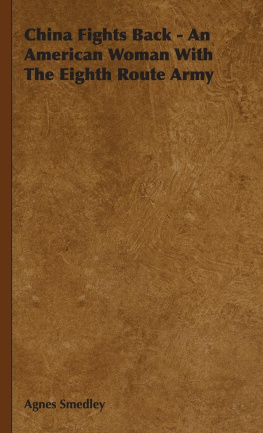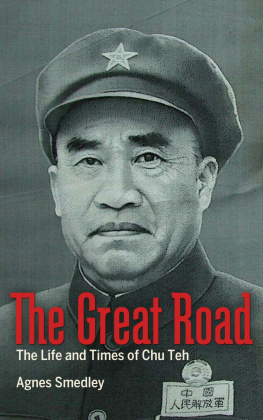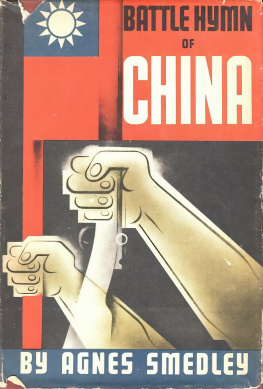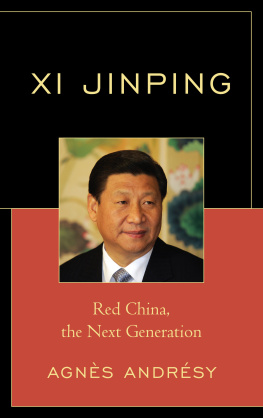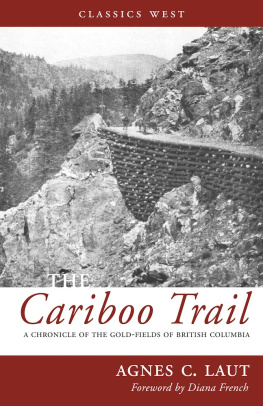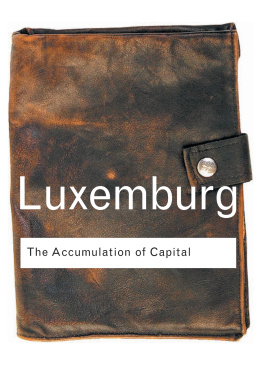Agnes Smedley - China Fights Back
Here you can read online Agnes Smedley - China Fights Back full text of the book (entire story) in english for free. Download pdf and epub, get meaning, cover and reviews about this ebook. year: 1938, publisher: Victor Gollancz Ltd, genre: Art. Description of the work, (preface) as well as reviews are available. Best literature library LitArk.com created for fans of good reading and offers a wide selection of genres:
Romance novel
Science fiction
Adventure
Detective
Science
History
Home and family
Prose
Art
Politics
Computer
Non-fiction
Religion
Business
Children
Humor
Choose a favorite category and find really read worthwhile books. Enjoy immersion in the world of imagination, feel the emotions of the characters or learn something new for yourself, make an fascinating discovery.
- Book:China Fights Back
- Author:
- Publisher:Victor Gollancz Ltd
- Genre:
- Year:1938
- Rating:3 / 5
- Favourites:Add to favourites
- Your mark:
- 60
- 1
- 2
- 3
- 4
- 5
China Fights Back: summary, description and annotation
We offer to read an annotation, description, summary or preface (depends on what the author of the book "China Fights Back" wrote himself). If you haven't found the necessary information about the book — write in the comments, we will try to find it.
China Fights Back — read online for free the complete book (whole text) full work
Below is the text of the book, divided by pages. System saving the place of the last page read, allows you to conveniently read the book "China Fights Back" online for free, without having to search again every time where you left off. Put a bookmark, and you can go to the page where you finished reading at any time.
Font size:
Interval:
Bookmark:
China Fights Back
by
Agnes Smedley
With a Map by J. F. Horrabin
London
Victor Gollancz Ltd
1938
epub version 1.0
 Map Showing the Area of the Japanese Offensive in the North West, and the Field of Operations of the 8th Route Army
Map Showing the Area of the Japanese Offensive in the North West, and the Field of Operations of the 8th Route Army The war of the Chinese people against the Japanese invaders is the fight of one-fifth of the human race for national independence for life, liberty and the pursuit of happiness. It is also a war in which hungry, half-armed Chinese farmers hold the front lines of mankinds forward progress, for you and for me, against an imperialism which threatens Asia, America, the peace of the world.
The Chinese Eighth Route Army, with which Agnes Smedley traveled, is important in this war not alone because it is the reorganized Red Army led by Communists, though that fact shows the new unity of China, bringing under one banner armies that have fought each other for the past ten years. It is important because it brings to Chinas war of resistance certain methods which are being increasingly adopted by the rest of the Chinese armies and the Chinese Government in order to win success. Close co-operation with the Chinese rural population, quick response to their needs and an effective technique for arousing and organizing them against the invader are the chief guarantee of Chinas ultimate victory against the superior armaments of Japan. More than that, they are the guarantee that after the long war is over, the Chinese people will have won not only independence from foreign invaders but also internal democracy the right of the people to rule in their own land.
It is an unbelievably complex struggle. Here is a vast peasant people, the most populous, industrious and patiently enduring of all the peoples of the earth. For generations it has fought with nature at the very frontiers of existence. Creeping deserts of Asia, ravaging floods of gigantic rivers, doomed year by year millions to death by famine, a doom inescapable as long as the primitive tools and the ancient social system survive. Ignorance, superstition and the vastness of a roadless land enslaved them. Landlords, tax-grafters and a host of corrupt bureaucrats and aloof intellectuals ground the toiling folk further into the dust.
The impact of the industrial West broke for a century on this ancient people, bringing new problems, new forms of exploitation, new desires. Foreign imperialism corrupted native officialdom still further with bribes and armed pressures. Against them successive waves for national independence and internal social change swept the country, penetrating ever deeper into the consciousness of the people, from the Taiping rebellion down to the present day. The Empire fell in 1911, releasing the aspirations of millions of patriotic intellectuals, but adding banditry and civil strife to the peoples burdens. The patriotic movement of all classes under the joint leadership of the Kuomintang and the Communist parties swept rapidly across China in 1927, creating new hopes and a new government, but these hopes were betrayed during ten years of dissension and civil wars, in which the Chinese bourgeoisie, led by Shanghai bankers, sought to dominate the country, while organizations of workers and farmers were suppressed.
Taking advantage of the internal strife of China, Japanese imperialism attacked the country, seizing Manchuria in 1931, penetrating Jehol and Chahar in the years that followed, holding the Chinese Government in Nanking passive by a combination of bribes and threats. Then Japan entered China proper, seizing Peiping, its ancient capital, striking next at Shanghai, the great port of Central China, advancing inland to take the government city of Nanking. Millions of people fled before their burning, raping, looting homeless into the interior of China.
It is the greatest catastrophe of human history, unexampled in the destitution of millions. But under the pressure of this invasion the Chinese people began to awake, to unite, to become a nation. Chiang Kai-shek had already to some extent strengthened the country with roads and railroads; these began even more rapidly to increase. One of the greatest problems was the horde of badly disciplined and even corrupt provincial armies, only one step removed from the bandit gangs which lived by loot. The Central Government had created some twenty-five divisions of relatively effective national troops, but even these were pitifully equipped in comparison with the modern armament of the Japanese. Some of the provincial leaders also had excellent armies most famous of these being the troops of the Kwangsi generals, responsible for the spectacular victories in Shantung in April 1938. The Chinese common soldiers were heroic in hand-to-hand combat; whole battalions of them died in Shanghai without quitting their posts. But more than the dying of heroes was needed; for a soldiers job is not to die but to win.
A chief factor in promoting the unity of China in this crisis was the attitude of the Communist Party and its Red Army against whom the Nanking Government had carried on civil war for ten years. In 1931 when the Japanese invaded Manchuria, they were the first to call for the cessation of civil strife. Regarding the Japanese invader as the chief enemy of all future progress of the Chinese common people, and the chief threat to their cause on both a national and world-wide scale, they finally agreed, in the interests of anti-Japanese unity, to sacrifice certain policies in the districts they controlled. They also placed their Red Army at the governments disposal; it was reorganized as the Eighth Route Army and sent into Northern Shansi for mobile warfare on the flank and in the rear of the enemy lines.
The Eighth Route Army brings to the battles of China a technique learned at heavy cost through ten years of civil war. They are the worlds most experienced guerrilla fighters; they have learned how to offset superior armaments by surprise attacks based on close co-operation with the surrounding rural population. Because they themselves were close to the needs of the common people, they were able to arouse and organize those people, giving them hope, desire to resist and a technique in fighting for their homes. This was the chief thing needed by China to win the war.
Agnes Smedleys book is important because it shows the Eighth Route Army in the detailed problems of its first combats in North Shansi, combats which led to new hope in China and to new tactics on all the Chinese fronts. We see the unbelievable poverty and ignorance of the Chinese peasants, and their fear of the warlord armies they have always known. We see the badly organized provincial troops retreating; even this is an advance over the past of China, for they no longer join the victor as they did in civil wars. We see the men of the Eighth Route Army, daring, determined, yet in many ways naive and ignorant like the peasants from whom they sprang. They are overwhelmed by the first sight of a locomotive, they are shocked by their first American movies, and they burn tens of thousands of Japanese yen, not understanding that it might be money. But they know one thing: how to unite the people against the Japanese invader. We see them organize; and their organization is hindered by peasant fears, by jealousies of provincial bureaucrats, by confused allies who use their name while disarming other government armies. We see, in short, all the chaos that was rural China; yet out of it all, success arises through the Eighth Route Armys infinite patience with the common people, loyal devotion to their interests, and ultimate reliance on the honesty of great masses of common folk defending their own homes.
Next pageFont size:
Interval:
Bookmark:
Similar books «China Fights Back»
Look at similar books to China Fights Back. We have selected literature similar in name and meaning in the hope of providing readers with more options to find new, interesting, not yet read works.
Discussion, reviews of the book China Fights Back and just readers' own opinions. Leave your comments, write what you think about the work, its meaning or the main characters. Specify what exactly you liked and what you didn't like, and why you think so.

